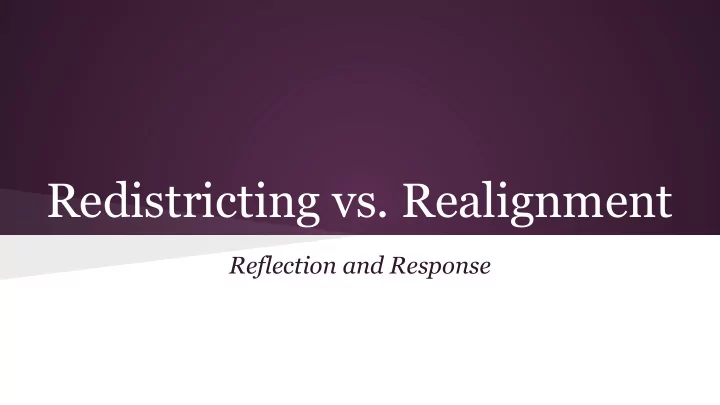

Redistricting vs. Realignment Reflection and Response
Start with “WHY?” Every member of the school community should have an equal opportunity to learn and grow, and all should have the same opportunities to meet with success.
Begin with the End in Mind! Equitable and balanced classrooms across the district’s schools ensuring students and teachers learn and grow to improve our district as a whole.
Visible Learning There are thousands of studies promulgating claims that this method works or that innovation works. We have a rich educational research base, but rarely is it used by teachers, and rarely does it lead to policy changes that affect the nature of teaching (Hattie, 2009)
Significance vs. Effect Size Significance is the Effect Size is a risk associated with measure of how not being 100% different two groups confident that what are from one another you observe in an -- it’s the measure of experiment is due to the magnitude of the the treatment or what treatment… Kind of was being tested. like how big is big.
Trust but Verify It’s better to have data about a program’s effects presented as an effect size, which helps us decide whether the program’s effect is potentially large enough to be worth pursuing in terms of time, money, and personnel costs (Berliner & Glass, 2015).
School Size d = 0.43 ● Stekelenburg (1991) ● Ready, Lee, & Welner medium effect (2004) and Lee & Smith (1997) ● Howley & Bickel (1999) and Lee & Smith (1997) Small around d = 0.2 ● Newman et al. (2006) Medium around d = 0.4 ● Byrk, Easton, Kerbow, Large around d = 0.6 Rollow, & Sebring (1993)
Class Size d = 0.21 ● Hattie (2009) ● Finn (2002) small effect ● Hattie (2009) Small around d = 0.2 Medium around d = 0.4 Large around d = 0.6
Socioeconomic Status d = 0.57 ● Sirin (2005) ● Hart & Risley (1995) large effect ● Clinton, Hattie, & Dixon (2007) Small around d = 0.2 Medium around d = 0.4 Large around d = 0.6
Parent Involvement d = 0.51 ● Hattie (2009) ● Hung & Ho (2005) medium/large effect Small around d = 0.2 Medium around d = 0.4 Large around d = 0.6
Multi-grade/multi-age Two sides of a coin! ● Hattie (2009) ● Trussell-Cullen (1994) d = 0.04 small/almost no effect ● Wilkinson & Fung d = 0.53 (2002) medium/large effect ● Berndt (2004)
School Leaders (2 types) Instructional leadership Transformational refers to those leaders who leadership refers to those have their major focus on leaders who engage with creating a learning climate their teaching staff in ways free of disruption, a system that inspire them to new of clear teaching objectives, levels of energy, and high expectations for commitment, and moral teachers and students. purpose such that they work collaboratively to overcome challenges and reach goals.
School Leaders d = 0.36 According to Brown (2001) medium effect Transformational, d = 0.36 Instructional, d = 0.66 Small around d = 0.2 at elementary, d = 0.76 Medium around d = 0.4 greatest effect, d = 0.91 Large around d = 0.6
Conclusion
Philosophical Approach Pragmatic Approach - Do what works Existential Approach - Do whatever you want Utilitarian Approach - Do the greatest good What is the greatest good for the greatest number of people?
Recommend
More recommend